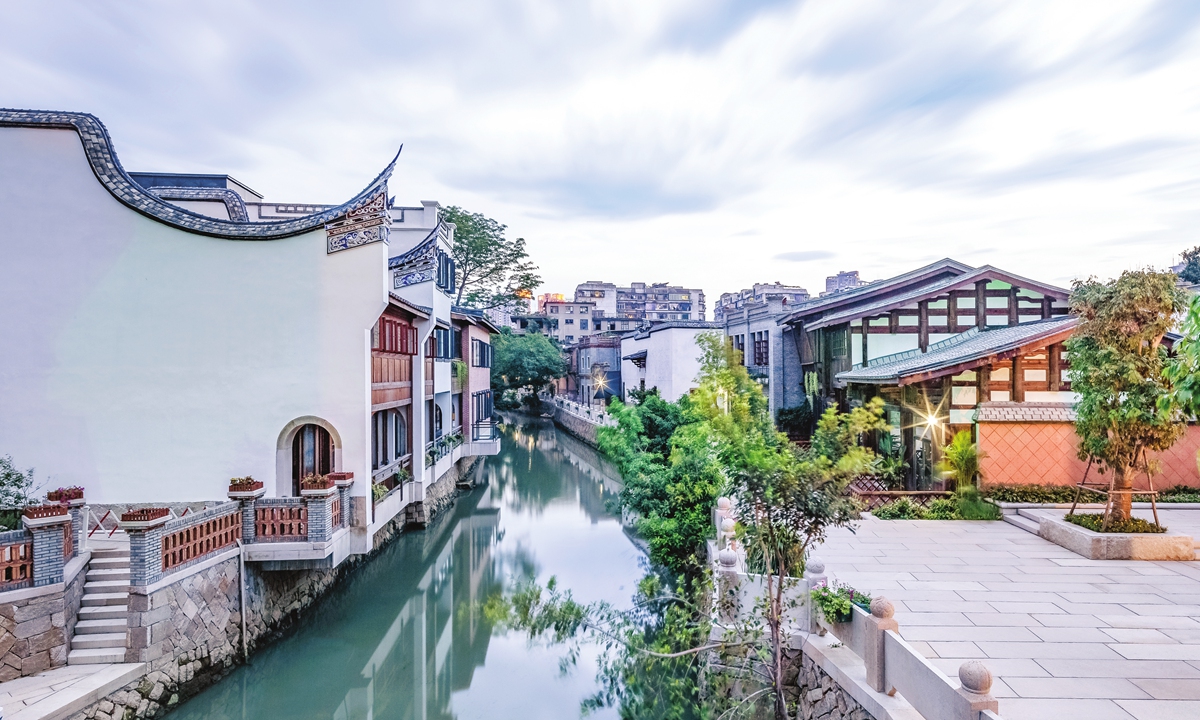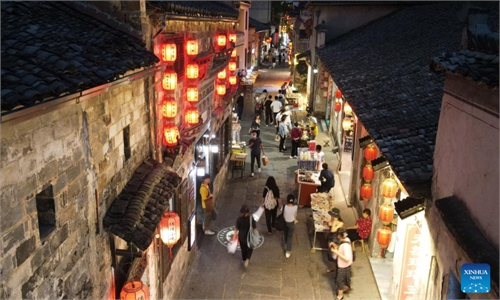
The Three Lanes and Seven Alleys in Fuzhou, Fujian Province Photo: VCG
In the center of the bustling city of Fuzhou, East China's Fujian Province, a man in his 70s is carefully guiding the restoration of a centuries-old neighborhood that is rich in traditional features.
This neighborhood is known as Sanfangqixiang, or the Three Lanes and Seven Alleys, a 40-hectare complex well-known for its traditional urban fabric of lanes and alleys. The green slate walkways are lined by ancestral houses, featuring white walls and black tiles.
Initially built in the Jin Dynasty (265-420), the neighborhood grew during the Tang Dynasty (618-907) and the Five Dynasties (907-960), and thrived in the Ming and Qing dynasties (1368-1911). Sanfangqixiang, dubbed a museum of Ming and Qing architecture, now boasts over 200 ancient buildings.
Chen Mulin, an expert in ancient Chinese architecture, has been helping to restore these structures as part of the city's efforts to address deterioration from natural erosion and human abrasion, as well as squatter settlements.
Among the first to be restored is a waterside pavilion stage. With local talent thin on the ground, Chen, then head of a cultural relics station in the city of Sanming, around 230 kilometers west of Fuzhou, was called in to provide technical assistance.
The place where the stage is located had been converted into a zipper factory, recalled Chen. The courtyard had been raised to facilitate the delivery of freight, while pillars inside the building had been removed to expand the production space. It was hardly recognizable as a stage.
Chen asked workers to restore the original structure and features of the waterside pavilion stage, using the same materials and craftsmanship with which it was built. On one occasion, while searching for an example of a broken component, he visited six or seven towns in a row.
"We must be scrupulous about every detail when it comes to the restoration of historical buildings. Not a single piece of wrong information should be passed down to our offspring," said Chen.
Nowadays, the courtyard is spacious. There are colorful paintings, lifelike stucco reliefs and ingeniously carved window panels. Standing on the refurbished stage, people seem to be whisked back to the Ming and Qing dynasties.
By the end of 2021, nearly 200 historical structures in the area had been repaired at a cost of 5 billion yuan ($726 million).
The ancient complex is also exploring other ways of revitalizing itself.
Many of the historical buildings have been opened to visitors, some filled with themed museums, cultural events and demonstrations of folk crafts, such as bodiless lacquerware and cork carving.
The efforts have paid off. Sanfangqixiang has become a popular tourist destination in Fuzhou, receiving more than 10 million annual visits since 2015.
It is early autumn in China. When night falls and the heat fades, tourists pour into the ancient lanes and alleys. Strolling along the bustling Nanhou Street, many stop at the specialty store run by Guo Li, a skilled cork carver.
"While properly preserving our traditional crafts, we must add some innovative modern-day elements so the crafts can shine once more," said Guo.

